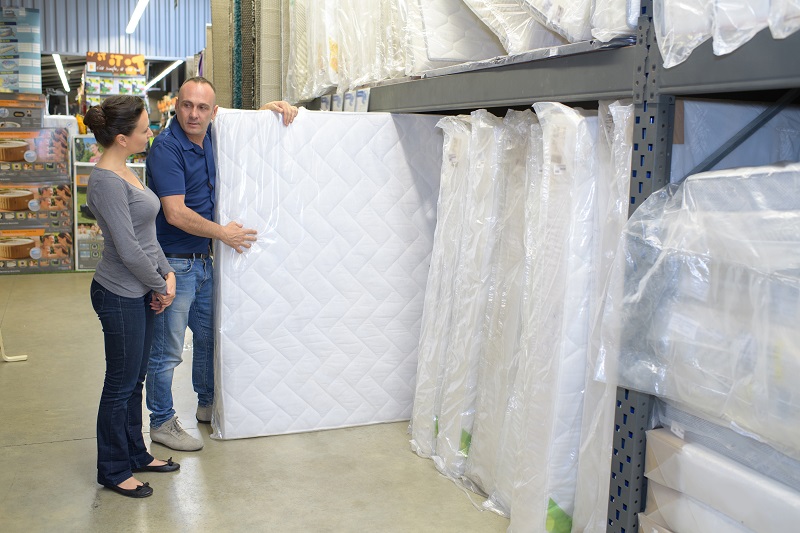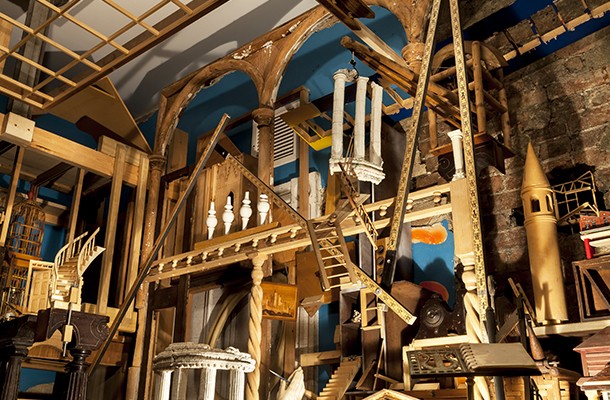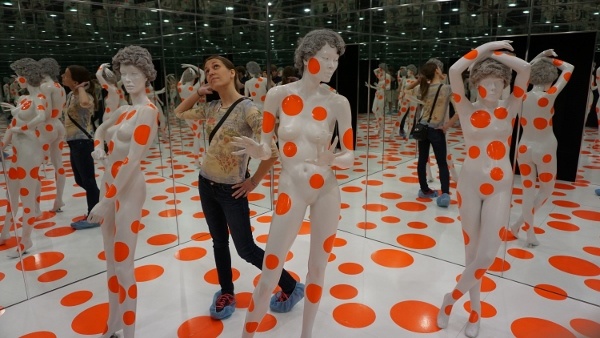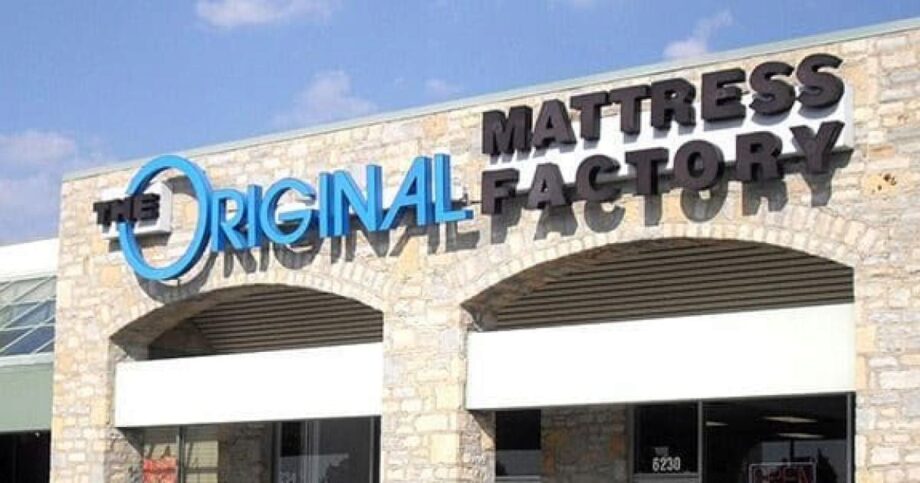A triangle of black letters spills across a white brick wall just down the hall from IFP Minnesota’s new quarters in a renovated factory in St. Paul’s Midway district.
Arranged like a gigantic eye chart topped by an “L,” the letters run on with no word spaces, seemingly random until, bingo, the first lines cohere and then the whole: Life ain’t so bad at all if you live it off the wall.
It’s just a bit of whimsy, but the phrase fits IFP and its new building perfectly. The organization for filmmakers and media artists, which hosts a three-day grand opening this weekend, exudes a stylish hipster vibe.
Ditto the century-old former mattress factory in which it is an anchor tenant. Tall windows flood the interiors with sunlight. Wide hallways, buffed terrazzo floors, high ceilings and sturdy pillars have the patina of age, while an entrance grid of tenant photos says up-to-the-minute modern. Among them are photographers, architects, a design studio, a coffee roaster and the Center for Mind-Body Oneness.
Renovated by First & First, a Minneapolis firm that specializes in updating derelict historic properties, the three-story factory is part of a six-building complex on a 5.5-acre site. An old on-site water tower inspired the complex’s new name, Vandalia Tower.
The future courtyard and parking lot were raw dirt last week as workers poured a concrete patio outside IFP’s office. A long brick shed was being rehabbed for an event center and a microbrewery, Lake Monster Brewing. The film group envisions collaborating with both for outdoor film and video screenings.
Paul Shambroom The late photographers Gus Gustafson and Ann Marsden (shown in 1983) are the namesakes of IFP’s new lobby photo gallery.“I thought this campus was totally weird when I first saw it, but that it had amazing potential too,” said Peter Remes, the CEO of First & First. His firm paid $3.2 million for the complex in 2012 and was advised to level it. “Everybody told us to tear it down because they felt it couldn’t be repurposed and reused.” But Remes “could squint and see the vision.”
Old mission, new vibe
Founded 28 years ago, IFP runs such middlebrow stuff as professional classes and teen summer camps. But it still looks and feels like a tech start-up. In addition to providing equipment and logistical support for filmmakers, it now serves videographers, writers, marketers, animators and anyone who might need production facilities.
Its office walls are lined with framed film posters. Funky burlap upholstery covers upmarket wing chairs, and the recycled kitchen sink was once a custom-order Kohler.
The posters are for “Life During Wartime,” “Howl,” “Darling Companion” and “Thin Ice,” films that IFP’s executive director, Andrew Peterson, coproduced before joining the staff in 2012. He has an MFA in film from New York University, worked at the Sundance Film Festival and continues to program the Provincetown International Film Festival.
He also boasts of applying a sharp pencil to IFP’s $750,000 annual budget, which includes $100,000 that the organization regrants to media artists on behalf of the McKnight Foundation. With his insistent bargaining, the tab for IFP’s 5,500-square-foot new headquarters slid in under the group’s $225,000 capital campaign goal. The campaign has raised $175,000 to date.
When offered a discounted $300 granite counter for the little staff and catering kitchen, Peterson responded, “No, I need free.”
Out went the granite, in came a butcher-block slab that hit his price point and fit the space. Many of the interior walls are made of unpainted particle board, another freebie. Staff offices are fitted with recycled library doors. Three classrooms, four screening rooms and eight editing stations complete the space.
“The feeling we were hoping to get here is comfortable and casual,” Peterson said. “It should be a space people want to be in.”
Expanded exhibit space
The Marsden/Gustafson photo gallery doubles as IFP’s lobby. It is considerably larger than the exhibit space at IFP’s former headquarters on University Avenue near Hwy. 280, where it was crammed into an awkward hallway.
The gallery is named after Ann Marsden and Gus Gustafson, beloved photographers who chronicled the local arts scene and died too young, Gustafson at 54 in 2003, Marsden at 55 in 2012. Plans call for four exhibitions per year showcasing photos and film-related images.
The first will feature a sample of its namesakes’ mostly black-and-white street pictures of local artists (Scott Seekins, Aldo Moroni), cars, political protests and poetic images of Paris at night. Curated by former gallery director Thom Barry, it hearkens back to a more intimate moment in Twin Cities cultural life when Marsden and Gustafson were at its heart.
“We could have gone after a national corporation and sold naming rights, but that wasn’t the feeling we wanted,” said Peterson. “Gus made me feel welcome and talented when I was just a kid. So we named it after them to be inspirational and to re-create that spirit of community.”

Mattress Factory August 17 Catalogue

Sleepers Mattress Factory

Purple Tries to Keep up with Demand Sells 'Every Bed We Can Make

Mattress Factory Pittsburgh All You Need to Know BEFORE You Go

17 Tips For Mattress Factory Experts For Better Buying Experience

GALAXY Cool Gel Memory Foam Mattress FACTORY SELECT SPECIAL National Mattress Outlet Plus

Compelling Contemporary Art at The Mattress Factory

Mattress Factory installations explore sustainable design

Housesized artwork premieres at Pittsburgh's Mattress Factory

Vote Mattress Factory Best Immersive Art Experience Nominee

Lay your head down with 17XO at The Original Mattress Factory

The Mattress Factory is a Stellar Contemporary Art Museum

Temuco Chile Rosen Mattress Stock Footage Video 17% Royaltyfree 17 Shutterstock

Original Mattress Factory Review 17 The Nerd's Take

About Spadina Industries Sleepers Mattress Factory

Find Unforgettable Art In A Most Unlikely Place A Pittsburgh

Mattress factory caught using old masks instead of cotton